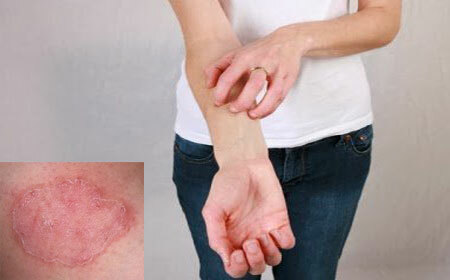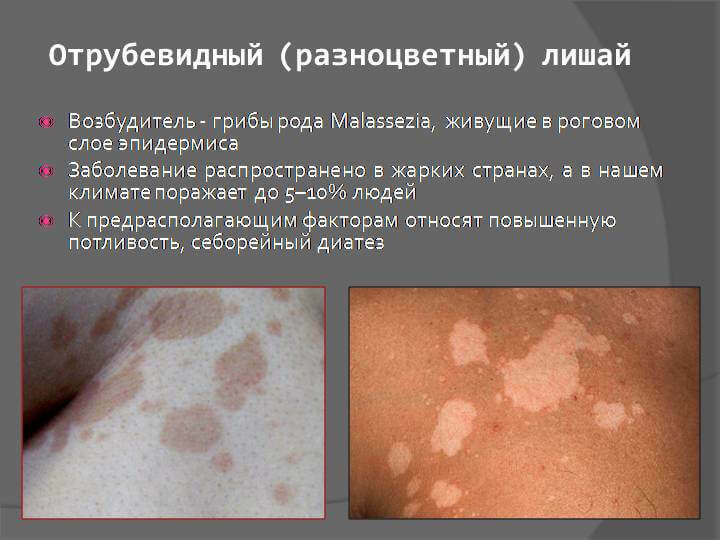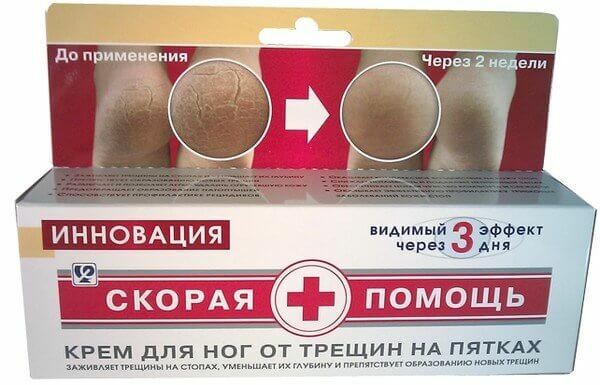Dermatitis: photos, symptoms and treatment in adults
Dermatitis is a disease associated with the skin and its surface, caused by the body's reaction to various factors (allergens, pathogens), often hereditary.
The definition of Dermatitis can be understood as different types skin diseases.
The disease usually affects the functioning of the skin and disrupts the person's homeostasis.
Let's take a closer look at the symptoms and treatment of various types of dermatitis below.
Content
- Pathogenesis factors
- Dermatitis symptoms.
- The causes of dermatitis
- Close reasons arise from:
- Types of dermatitis
- Forms of dermatitis
- Dermatitis treatment
- Treatment of dermatitis in adults
- Prophylaxis
- Related Videos
Pathogenesis factors
There are various pathogenic factors:
- Stress. Against the background of stress, a person's immune system usually decreases, and can affect adaptive responses.
- Upon contact with certain factors, for example, any burns or frostbite of the skin.
- If the pathogen enters the body through food, inhaled air, or parenterally.
Dermatitis symptoms.

Dermatitis is very similar to allergies and various inflammations, it can be difficult to distinguish them.
The disease is distinguished by the persistence of the passage of the disease and its seasonal manifestation.
- The skin is itchy. The manifestation of this symptom depends on the degree of irritation of the skin nerves. If the itching is severe, and there is little damage to the skin, this is an allergic reaction against the background of atopic dermatitis. If itching and damage are the same, it is contact dermatitis.
- Red skin color. Erythema - high blood filling of dermal capillaries. In more acute stages, redness with blurred edges is detected and the skin swells at the site of the lesion. If you press your finger on the red area, the place will turn pale. Erythema has nothing to do with diathesis hemorrhage.
- The appearance of a rash. Often, the types of rash are associated with a specific dermatitis, which helps to diagnose a skin disorder. The appearance of a rash affects the skin in the moving parts of the body, on the face, where there is hair, armpits and groin.
- Exudation. This term means severe inflammation with exfoliation of the epidermis. This symptom can cause skin cracks and self-expansion.
- The skin is peeling. With the location of the skin to dryness of the surface and a small number of sebaceous glands, this symptom appears. Usually this symptom in the chronic course of the disease.
The causes of dermatitis
The reasons are divided into two types: distant and close. Remote causes include:
- An inherited disease, genetically. The reasons for the transmission of infected genes have not been studied by science. Usually, dermatitis in a child appears if his parents are prone to allergies. In adults, the disease may not be related to the parents and their predisposition to such diseases, which makes it difficult to make a correct diagnosis.
- Acquired disease. 70% of patients with atopic dermatitis are not related to the genetic transmission of dermatitis. It has been proven that the majority are infected due to weakened immunity, poor hygiene, and lack of hardening.
- Wrong lifestyle, physical underdevelopment, frequent stress, poor social living conditions.
- Chronic diseases that accompany a person all his life, or when the body gets sick with an infectious or invasive disease.
Read also:Xerosis of the skin and eyes
Close reasons arise from:
- Stress. Stress provokes an imbalance in the predisposition to this disease. As a result of stress, defenses are depleted and the immune system is affected.
- Contact with the source of this infection or in some way the entry of infected foreign bodies into the blood, followed by a skin reaction. It can be the sun's rays, cold weather or vice versa hot, various household chemicals, a quartz lamp, radioactive radiation, alkalis, acids. People with hypersensitivity may react to food, drugs, animals, insects. It is very important to determine the cause of dermatitis!
Dermatitis is often confused with psoriasis, which is shown in the photo below.

Psoriasis not transmitted and associated with autoimmune diseases. This disease is distinguished by the characteristics of the papules, and the symptom as a result, which, in psoriasis, the blood leaves the capillaries.
Types of dermatitis
1. Dry dermatitis.In cold weather, in people of age or who have a predisposition to dry skin, dermatitis problems often occur. Its causes are also dry weather, transmitted genes from parents, a psychomatic cause. This type manifests itself in most cases on the feet, sometimes it affects other parts of the skin. Dry dermatitis is expressed by seasonality, chronic course, high dryness of the skin, cracks in diseased areas, itching, redness.

2. Itchy dermatitis. It is manifested by the body's response to small frequent stimuli that affect the nerve endings. The irritation is accompanied by scratching and nervousness. They accentuate the popular (all over the body) and local itching. Popular irritation is thought to be the result of diabetes, atopic dermatitis, kidney disease and liver, functional and basic defects of the brain of the head, instability of the sebaceous glands, hypersensitivity. Local itching manifests itself due to various beetles, dermatitis associated with allergies and is characteristic of delicate skin, in active parts of the body.

This dermatitis is classified into:
- Strofulus, appears in infants. The child pours out pink papules, covering almost the entire skin. If the disease progresses, small blisters may appear on the papules.
- Pruritus in the older generation. It is a continuation of the stropulus, but it can also be an independent disease.
3. Infectious dermatitis.The causes of this disease can be diseases such as: chickenpox, scarlet fever or dermatitis with rash, wounds on the skin after surgery, caused by microorganisms causing suppuration. On the skin, complications after surgery are isolated in the form of pustules on the surface of the skin, abscesses, boils, boils, phlegmon.

4. Fungal dermatitis.This type is characterized by individual rashes - mikids. Mikids can only be found in the case of a fungal infection. It manifests itself in the form of papules, pustules, crusts against the background of damage to human immunity, poor condition of the skin's defense system, a predisposition to moisturized skin.

5. Dermatitis associated with the ears.It differs in an acute and protracted form, accompanied by itching. Against the background of the acute form, there are redness, primary rashes like urticaria.
Read also:Weeping lichen in humans: causes, photo signs and treatment
The chronic course of the disease is accompanied by exfoliation of the skin, moist crusts, it seems that there is a plug in the ears. Wet integuments are easily vulnerable to various infections.
The causative agents of this type can be scratching of the ears, itching of the skin near the ears, fungal diseases in the ear canal, various skin lesions. If the disease progresses, it is possible that an infection has entered the inner ear. This dermatitis is persistent and almost always reappears.

6. Dermatitis with bullae.Bulls are blisters that appear as a rash on the skin, develop as a result of the course of acantholysis. Bulls create erosion after bursting.
The contents of the bulla are usually filled with exudate. This dermatitis affects areas of hair on the body, on the mucous membranes of the mouth and on the lips.
Due to the course of this disease in the oral cavity, with large-scale lesions of the mucous membrane and improper treatment, it can be fatal!

7. Red dermatitis.Dermatitis, manifested in a chronic form, is characterized by profuse itching and the appearance of papules. Papules in this form of the disease have a light red color, there may be a purple tone.
An interesting identifiable property of red dermatitis is the depressed surfaces of the papules. Ripe papules enlarge on a large scale and form plaques. The plaques take on a grayish-red hue and become thicker.
After treatment of this disease, traces of hyperpigmentation remain on the areas affected by the plaques. Papules are usually localized in places of flexion of the trunk, on the sides of the body, in the mucous membranes of the oral cavity and genitals.

8. Dermatitis due to food allergies. This type manifests itself from birth and often lasts all life, but in some cases it is possible to cure.
Food dermatitis can become cause of asthma in an adult generations and in children. This disease manifests itself in newborns with redness on the cheeks or gluteal muscles, on the head, in places of diaper rash.
It is better to find out the cause (allergen) of the child from birth, due to which this disease appears.

In children, food allergies can be caused by:
- Bad ecology
- Passed down from parents
- Foods with allergens
In adults, symptoms are expressed in other forms:
- May have a burning sensation in the esophagus, gas formation, poor digestion
- Itchy skin
- Runny nose, conjunctivitis
- Frequent fatigue, swelling of the arms and legs
- High fever (not common)
Another example of foodborne dermatitis in a child in the photo below:

Forms of dermatitis
- Acute course of the disease. At the initial stage of the disease, itching occurs, a low temperature, and the nasal mucosa may become inflamed. Symptoms may be slight redness, swollen areas of the skin, impaired functions, manifested by papules, vesicles, and bullae.
- Prolonged dermatitis. During this form of inflammation, there are no, only secondary rashes can exist.
Dermatitis treatment
Step-by-step treatment atopic dermatitis in children:
- First of all, you need to identify and get rid of provoking factors. These factors include the atmosphere in the child's bedroom, the constant use of chemical cosmetics when bathing the baby, the conditions of detention, and much more. All this affects the protective environment of the baby's skin and, as a result, the skin is affected. To prevent the disease, it is necessary to carry out the prevention of atopic dermatitis, just to eliminate the above factors.
- It is necessary to moisturize the baby's skin with emollients. Emollients are ointments, washing and bath products based on fats and fat-containing substances; they do not penetrate deeper than the stratum corneum of the skin. The function of emollients is to soften and moisturize baby's skin. In order to find out which remedy is suitable for the child's body, you must definitely ask a doctor! You should not save on ointments and it is better to buy more for the baby.
- Treatment with corticosteroids. Corticosteroids are hormones that contribute to the anti-inflammatory process. This treatment process can only be prescribed by a doctor, you cannot choose hormones on your own!
- A small percentage of children with more severe forms of dermatitis need stronger treatments. Usually doctors in such cases prescribe antihistamines, sorbents, irradiation and immunomodulators.
Read also:Varicose eczema
With the complex application of these methods, the likelihood of curing a child increases by large percentages.
Treatment of dermatitis in adults
In adults, the process of treatment is more complicated, due to the complexity of the course of the disease. The main methods of treatment are:
- Treatment with antihistamines, which help reduce skin irritation. For example, fit Suprastin, Claritin, but it is better to ask your doctor.
- Find out which allergen the body reacts to, and stop in any way, contact with it. You may have to give up some factor for life.
- Follow a hypoallergenic diet.
- Cleansing the gastrointestinal tract with special medications such as activated charcoal or Polysorb.
- Doctors often prescribe hormonal creams and ointments, but using them too often can be detrimental to health. Use ointments such as Akriderm, Elokom.
- Use of non-hormonal medications. There is a large assortment of such medicines in the pharmacy, and they do not negatively affect the body.
- To destroy inflammation, antiseptics and antimicrobial ointments are used.
- In the treatment of fungal diseases, naturally antifungal medications are used.
- The psychosomatic state of a person also affects skin diseases, so it is worth taking sedative pills.
Prophylaxis
- use various lotions, creams, moisturize the skin and take care of it;
- do not comb the affected skin;
- observe the atmospheric indoor climate;
- reduce sweating;
- follow a diet;
- avoid temperature extremes;
- relax in resorts;
- take medicinal baths;
- avoid contact with animals.



